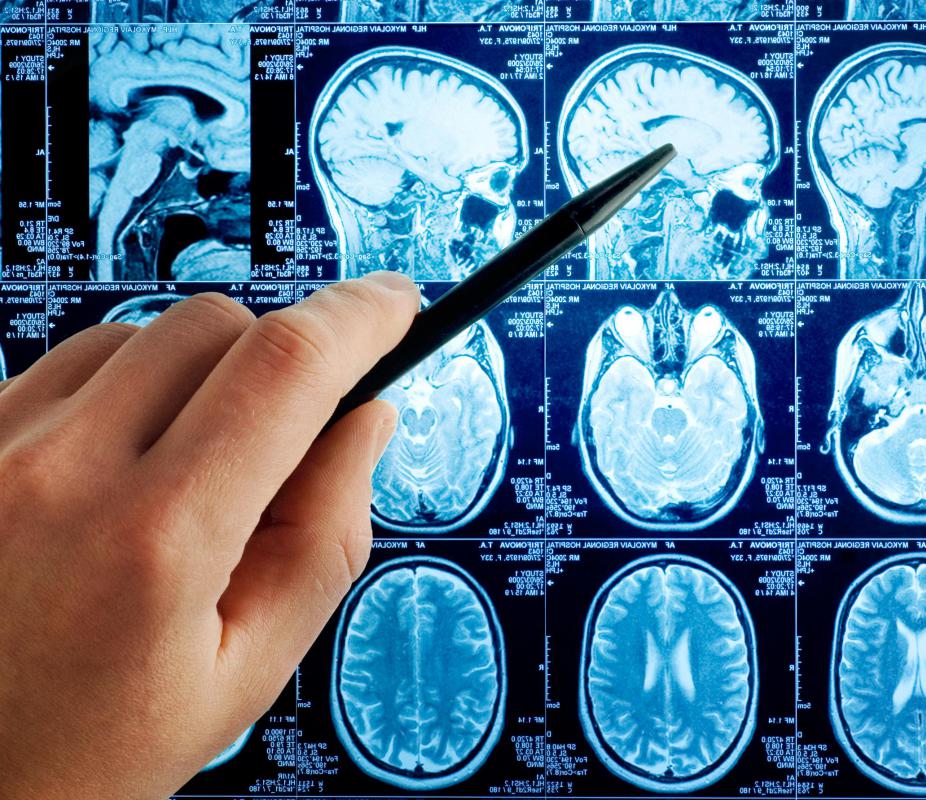At TheHealthBoard, we're committed to delivering accurate, trustworthy information. Our expert-authored content is rigorously fact-checked and sourced from credible authorities. Discover how we uphold the highest standards in providing you with reliable knowledge.
What is a Head Mass?
A growth comprised of abnormal cells that forms in the brain is known as a head mass. Upon discovery, the mass will be evaluated to determine if it is a primary mass or a secondary mass and whether or not it is benign or malignant. Treatment is dependent on the type and location of the mass and the overall health of the individual.
A head mass, also known as a brain tumor or lesion, that originates in the brain or the immediate vicinity is considered a primary mass. Resulting from the unexplained mutation of healthy cells, a primary brain tumor forms when the abnormal cells multiply uncontrollably and do not die as normal cells would. The accumulation of abnormal cells results in the formation of a mass. The type of primary brain lesion that forms is named for the cells from which it originates, such as meningioma, pineoblastoma, and astrocytoma.

A secondary brain tumor is the most common form of diagnosed brain lesion. Also known as a metastatic tumor, a secondary mass forms when a cancer in another part of the body spreads to the brain. Cancers most frequently associated with a metastasized secondary brain tumor include lung, colon, and melanoma.
Individuals with a head mass may experience a variety of symptoms dependent on the size and location of the mass. The sudden onset of sensory difficulties such as problems speaking, blurred or double vision, and impaired hearing may be indicative of the presence of a brain tumor. Confusion, difficulty with balance, or impaired sensation within one’s extremities may occur due to a head mass. Additional signs might include inexplicable vomiting or nausea, personality changes, and seizures.

There are a variety of tests used to confirm the presence of a suspected brain lesion. Individuals may undergo a neurological examination that involves hearing, vision, and coordination tests. Magnetic resonance imaging (MRI) scans that involve the use of a contrast dye to create a clear image of the brain may be performed. Individuals with an existing cancer may undergo additional imaging tests, such as an X-ray or computerized tomography (CT) scan, to determine if the cancer has spread to the brain. In some cases, guided imaging may be utilized to aid with a stereotactic needle biopsy of the brain tumor to collect tissue samples for laboratory analysis.

Treatment for a brain tumor is dependent on a number of factors, including the location, size, and type of tumor. Approaches to treatment are also dependent on the overall health and situation of the individual. A mass located in an accessible area of the brain may be surgically removed in its entirety. Masses located in sensitive areas of the brain or embedded deep within the brain tissue may pose a serious risk for complete surgical removal, in which case, only a portion of the mass may be removed. As with any surgical procedure, there are risks associated with the removal of a brain tumor and may include damage to surrounding nerves and soft tissue, infection, and excessive bleeding.

Additional treatment options for a brain tumor include the administration of chemo and radiation therapies, radiosurgery, and drug therapy. Chemotherapy involves the use of orally or intravenously administered drugs that target and eradicate cancerous cells. Radiation utilizes beams of highly concentrated particles of energy to target and eliminate cancerous cells and may be administered internally or externally depending on the individual’s situation. Radiosurgery involves the use of multiple beams of radiation to target the tumor and is generally employed as a treatment option for inoperable tumors. Drug therapies, also known as targeted drug therapies, possess a cell-specific focus that is used to target and eradicate cells within the tumor and eliminate its blood supply, thus shrinking the tumor.

Due to the impact a brain tumor may have on the body's systems and its overall ability to function, rehabilitation may be necessary following treatment. Individuals with a head mass may experience impaired cognition, movement, and sensory perception, necessitating them to relearn certain processes and regain strength. Rehabilitation can be an extensive process, requiring time and patience and may include speech, physical, and vocational therapies.

Complications associated with a brain lesion are dependent on the location of the tumor. Depending on the extent of damage caused by the tumor, an individual may experience complications that include hearing loss, extensive physical weakness, and an increased risk for seizures. Risk factors associated with the development of a brain lesion include a family history of brain tumors and occupational hazards that involve regular exposure to chemicals such as those associated with certain industries, including oil refining, health care, and agriculture.
AS FEATURED ON:
AS FEATURED ON:
















Discuss this Article
Post your comments